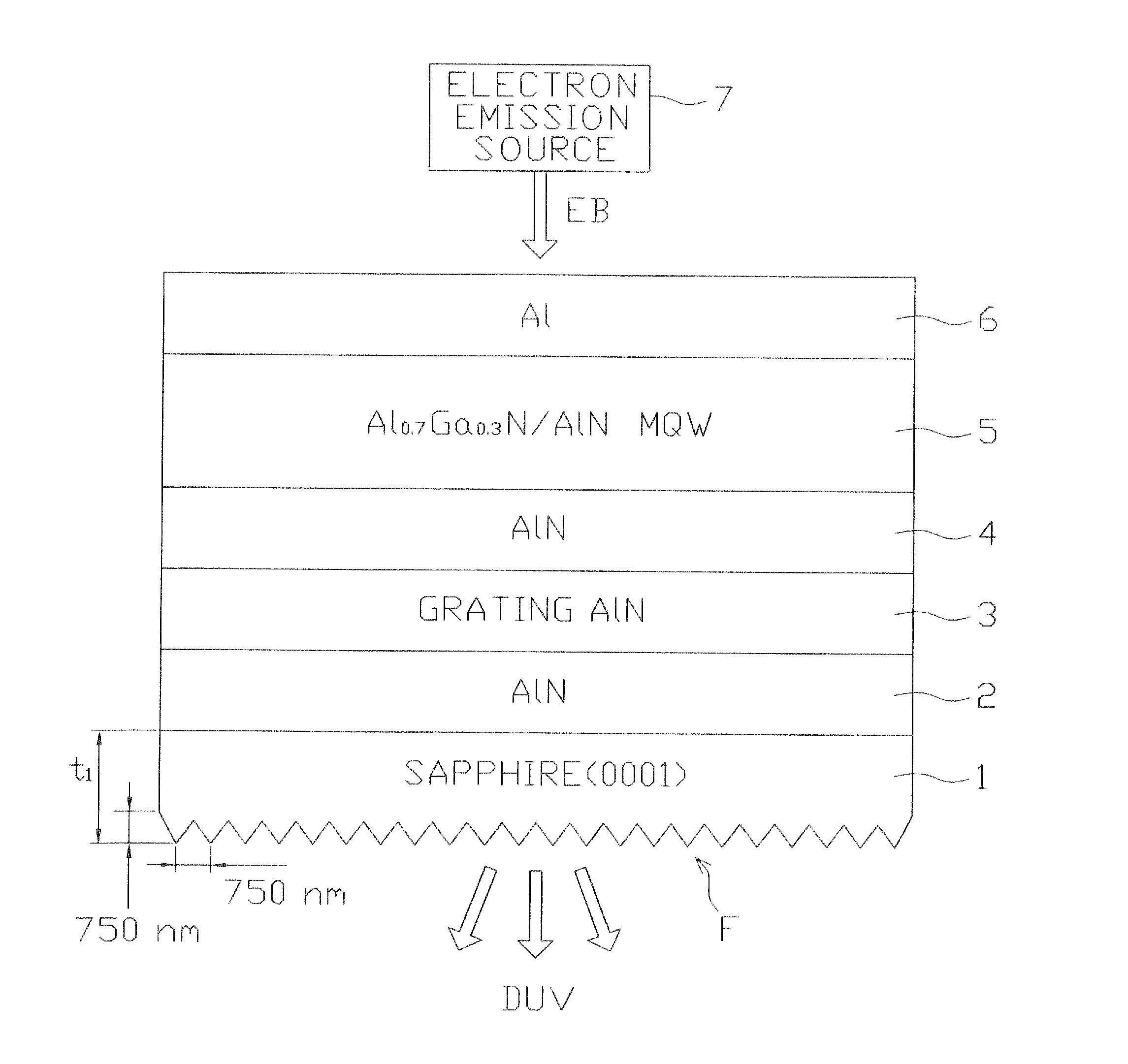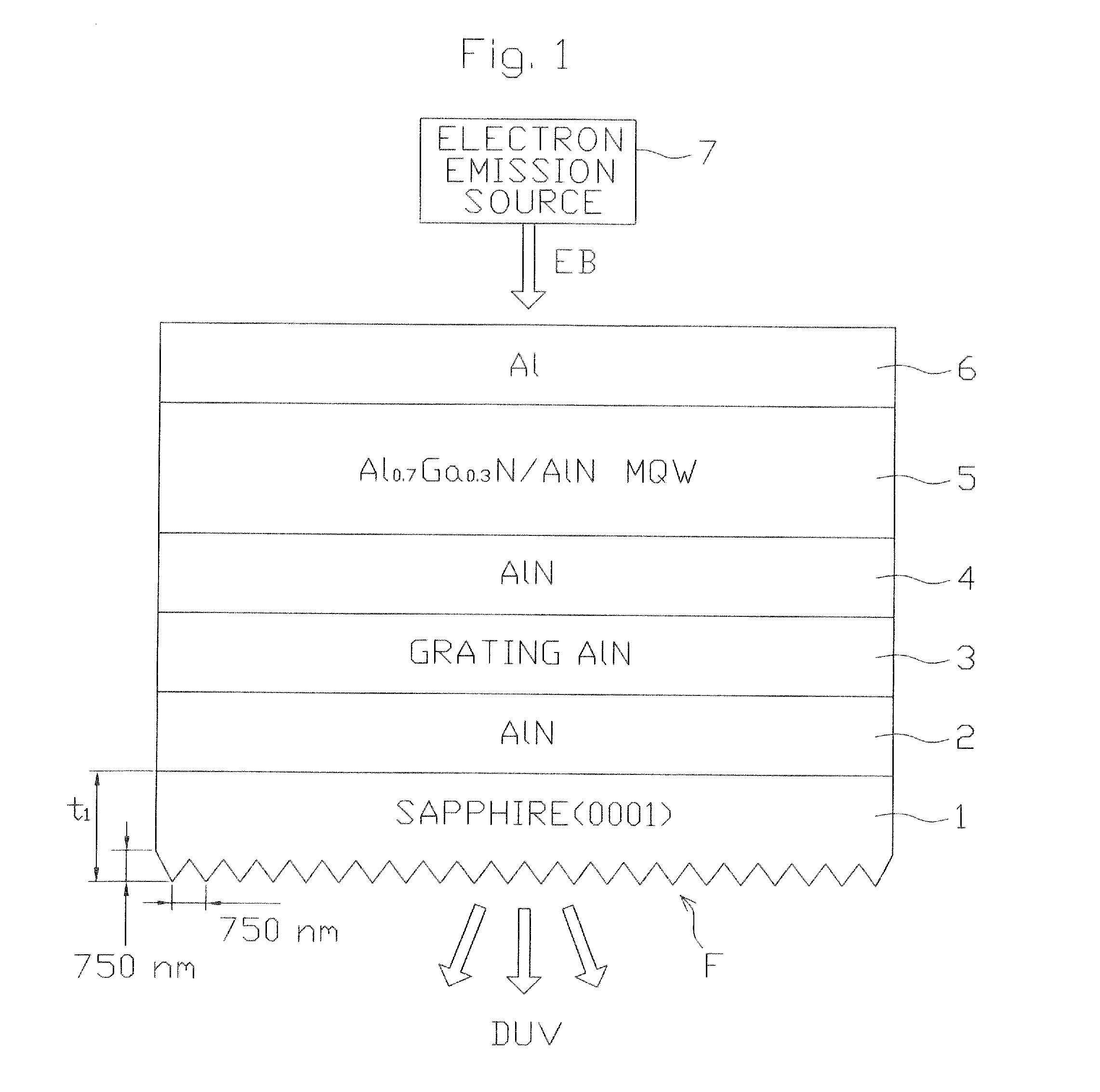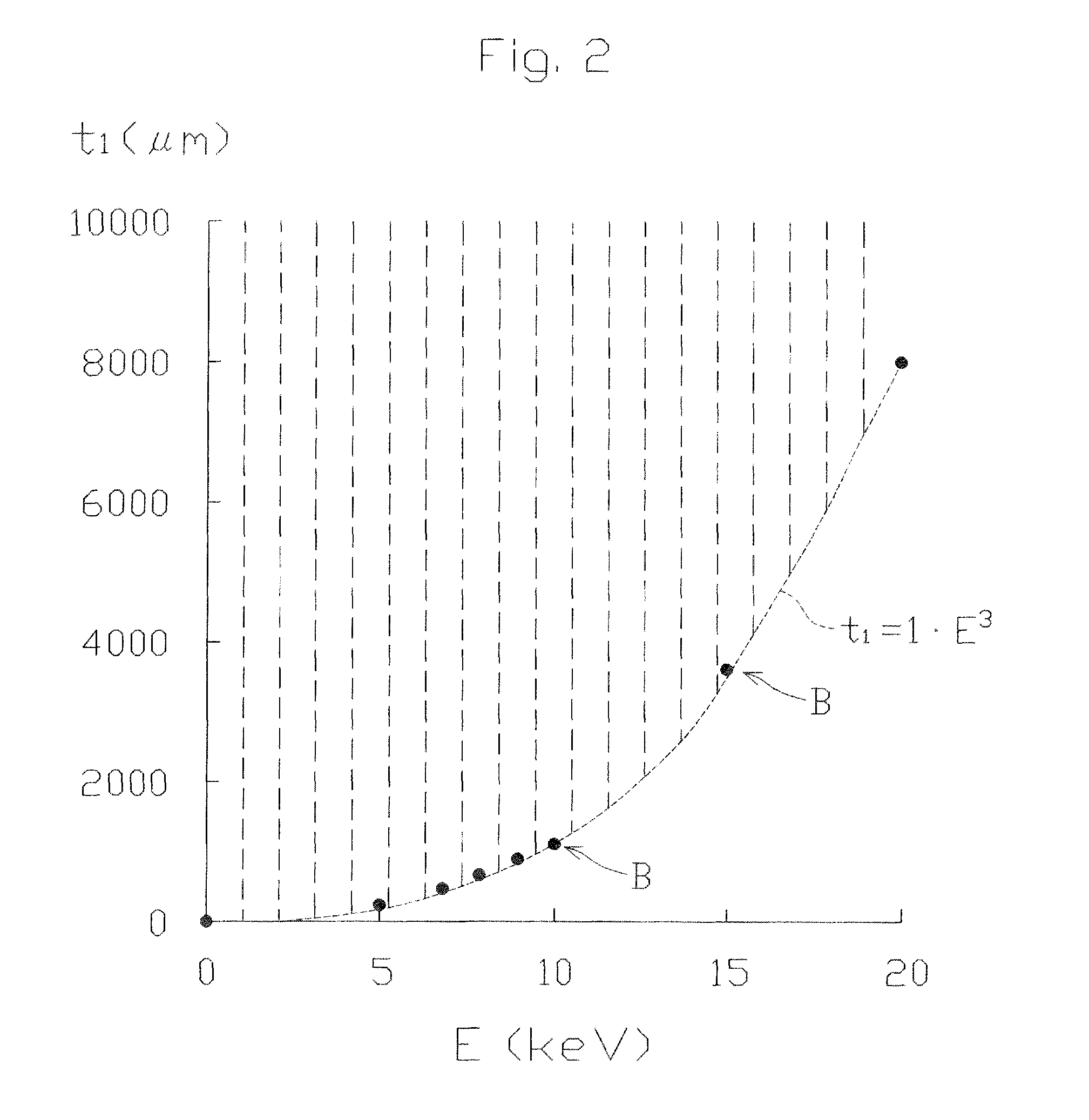Deep-ultraviolet light source capable of stopping leakage of harmful X-rays
a technology of ultraviolet light and harmful x-rays, applied in the field of deep ultraviolet light sources, can solve the problems of low ultraviolet emission efficiency, large electromagnetic noise, and preferable in view of eco-efficiency, and achieve the effect of reducing the required degree of vacuum scaling, and prolonging the life of electron emission sources
- Summary
- Abstract
- Description
- Claims
- Application Information
AI Technical Summary
Benefits of technology
Problems solved by technology
Method used
Image
Examples
Embodiment Construction
[0048]In FIG. 1, which illustrates an embodiment of the deep-ultraviolet light source according to the presently disclosed subject matter, this deep ultraviolet light source is constructed by a sapphire (0001) substrate 1, an about 600 nm thick AlN buffer layer 2 formed on the sapphire (0001) substrate 1, an about 3 μm thick grating AlN layer 3 formed on the AlN buffer layer 2, an about 60 nm thick Al0.7Ga0.3N / AlN MQW layer 5 consisting of ten periods of one about 3 nm thick Al0.7Ga0.3N well layer and one about 3 nm thick AlN barrier layer, and an aluminum (Al) metal back layer 6.
[0049]In FIG. 1, when the deep-ultraviolet light source of FIG. 1 is irradiated with an electron beam EB emitted from an electron emission source 7, a deep-ultraviolet light DUV is emitted from a light taken-out surface F of the sapphire (0001) substrate 1.
[0050]First, the sapphire (0001) substrate 1 is discussed in detail below.
[0051]In FIG. 2, each black spot B designates a simulated thickness t1 of the s...
PUM
 Login to View More
Login to View More Abstract
Description
Claims
Application Information
 Login to View More
Login to View More - R&D
- Intellectual Property
- Life Sciences
- Materials
- Tech Scout
- Unparalleled Data Quality
- Higher Quality Content
- 60% Fewer Hallucinations
Browse by: Latest US Patents, China's latest patents, Technical Efficacy Thesaurus, Application Domain, Technology Topic, Popular Technical Reports.
© 2025 PatSnap. All rights reserved.Legal|Privacy policy|Modern Slavery Act Transparency Statement|Sitemap|About US| Contact US: help@patsnap.com



